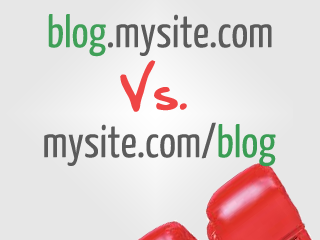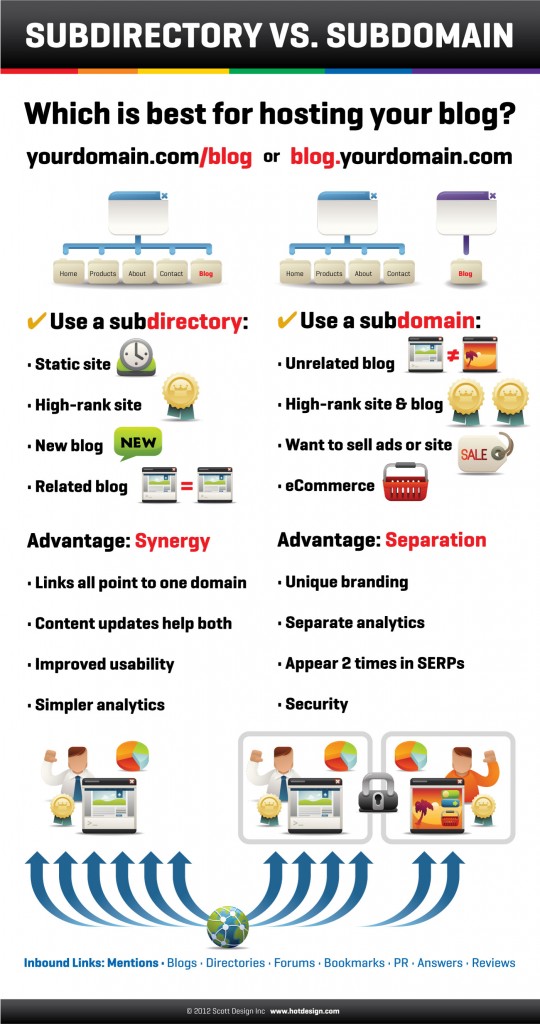 I've seen this question floating around the internet quite a bit.
I've seen this question floating around the internet quite a bit.
There are a LOT of really technical answers which I find to be a bit of overkill.
Most people with this question are bloggers or entrepreneurs that want to know the drawbacks and benefits from creating either a subdomain or a subdirectory.
Quick review between the two…lets say you have a blog. You can create a subdirectory for your blog at: www.yoursitename.com/blog OR you could create a subdomain at: blog.yoursitename.com.
What most people don't know is that it takes the same amount of effort to create, maintain, and implement each one.
So which one is better? The quick answer is below.
Should I Choose A Subdirectory?
As with most subjects regarding technology, there is no one solution fits all. Ultimately the decision will depend on your business model and your marketing strategy.
For most bloggers, what I've found is that it is better for them to use a subdirectory (mysitename.com/blog) instead of subdomain. This is mainly due to the inherited SEO ranking for the subdirectory.
If your site has a pretty decent ranking and you create a subdirectory, that subdirectory will inherit that ranking. In addition, all traffic to that subdirectory will help your primary domain ranking as well.
So if you meet the two criteria below I would definitely recommend a subdirectory over a subdomain:
- Your blog content matches your website content
- You have a pretty good SEO ranking
Maybe I need a Subdomain?
Subdomains offer a different experience. Google treats subdomains and primary domains as separate entities. This means you can use a subdomain to target different keywords than your main domain.
This approach is ideal for business owners whose blog may have a different purpose than their main site. Another good use is for eCommerce site owners who would like to separate their shop page from their main site.
In short, subdomains give you an effect of separation without true separation (you get all the benefits of purchasing a new domain without needing to purchase one).
If you meet the criteria below I would definitely recommend you using a subdomain over a subdirectory:
- Blog content is separate from main site
- Ecommerce site owner
- Target more than one audience with your site
What Does This Mean For the Internet Marketer?
For IM'ers this gives you flexibility. If the product(s) you're promoting are in line with your website than use a subdirectory to help your sales page or landing page be found by Google easier by inheriting your current site ranking.
If your product(s) are different than your main site use a subdomain and utilize the necessary keywords to optimize it's SEO to a specific audience.
Of course there are many more reasons and applications but I've found most marketers fall into the cases listed above.
Conclusion…
There are some benefits (and drawbacks) to both approaches. The best thing to do is really think about what you're trying to accomplish with your website and pick the best method to support your approach.
Here's a link to a great article that I found very useful in preparing this post.
You will find the infographic I've attached below on that site as well.

